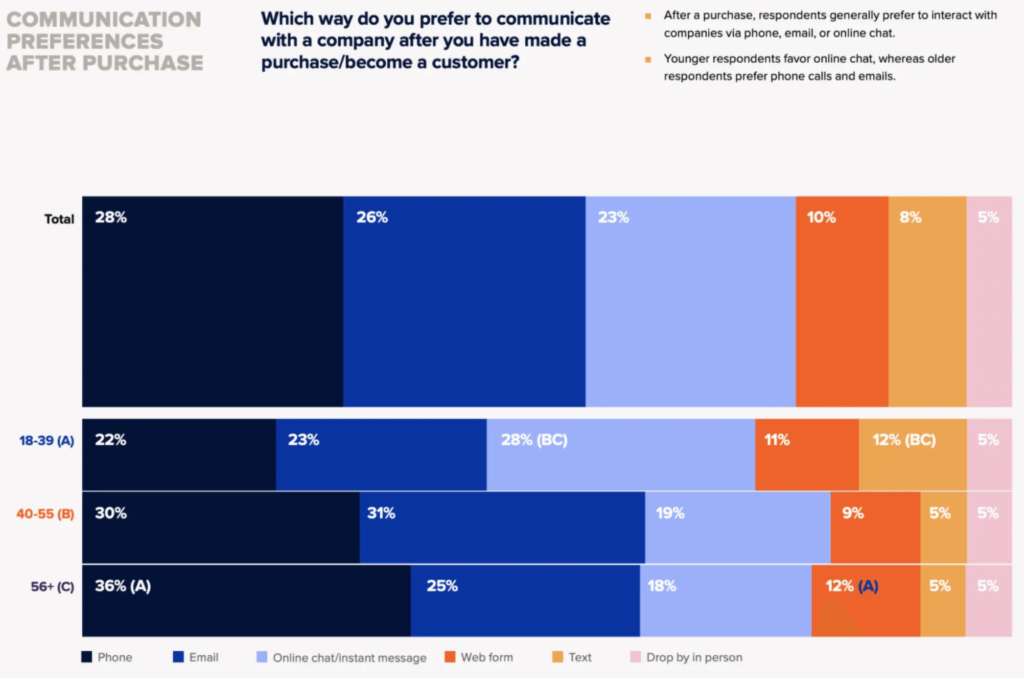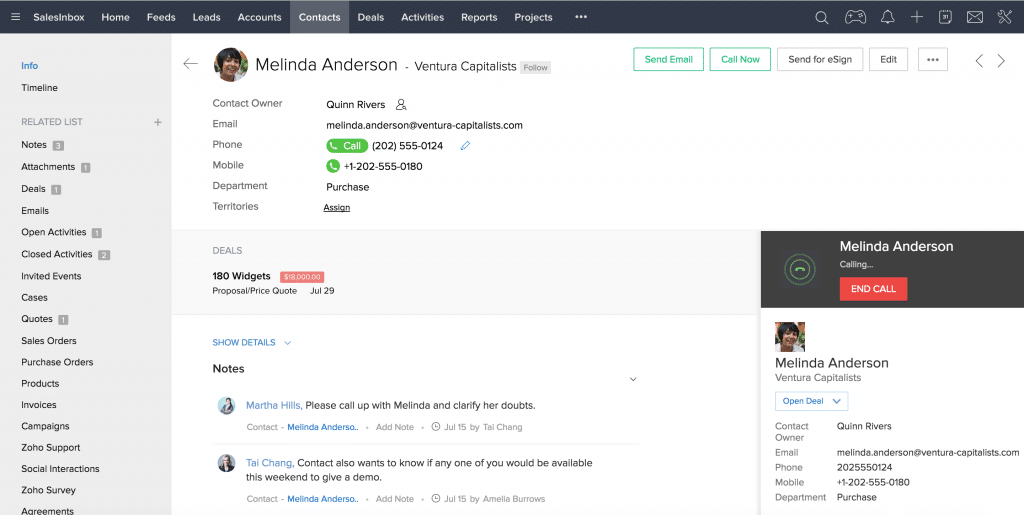If you’re a startup, customer experience is everything.
Because up-and-coming companies thrive on repeat business and positive word-of-mouth.
Simple enough, right? Give your customers what they want and they’ll stick around for the long-haul.
But as soon as you fail to provide that ever-so-important experience, don’t be surprised when those same customers bounce.
That’s why it’s so important for startups to set up their games when it comes to customer service. Doing so means not only meeting with customers on their channel of choice but providing timely solutions on those same channels.
Enter omnichannel customer service.
In this guide, we’ll cover the best practices of startup customer service for companies looking to stay lean and provide an awesome experience at the same time:
- What is omnichannel customer service exactly?
- The importance of omnichannel customer support to tech startups
- Startup customer service best practices
- Consolidate your customer service communications
- Pay close attention to any and all customer notifications
- Personalize your replies and responses
- Practice proactive customer support
- Give customers the opportunity to talk to an actual person
- Empower your customers to help themselves
- Encourage your service team to collaborate
- Let analytics guide you to improve your customer service
- Make sure your customer service experience is mobile-friendly
- Keep an eye on your competitors’ customer service
🤝 Is your tech startup’s team collaborating as effectively as it can to provide good customer service?
What is omnichannel customer service, anyway?
Although “omnichannel” might sound complex at a glance, the concept is pretty simple.
Based on RingCentral’s research, people have totally different preferences in terms of how they communicate with businesses.
Some customers prefer face-time or a phone call, while others will only go back-and-forth via email or social media:
That’s exactly where omnichannel customer service comes in.
Omnichannel customer service means addressing your customers’ concerns anywhere and everywhere, all the while providing a consistent level of communication on each channel. This means seamlessly moving from support emails to calls and beyond, picking up where you left off your last conversation without missing a bit.
To be clear though, “omnichannel” customer service is about more than offering a live chat or responding to customers via social media.
Providing in-depth, consistent support across each channel is essential to keeping all (and not just some) of your customers satisfied.
Why omnichannel customer support matters so much
You have a lot on your plate.
That said, startups absolutely must prioritize customer service and an omnichannel approach is central to doing so.
And you don’t have to take our word for it, either. Below are some recent customer experience statistics which highlight the importance of omnichannel communication.
Consumers are going all-in on digital communication with businesses
Fact: 66% of companies are seeing an increase in volume in service requests from digital channels. This includes video calls, social media, and live chat options.
Again, a mere phone number or email address doesn’t cut it anymore. Even if your company has a “preferred” method of contact, you can’t realistically expect your customers to conform to it. You need to be anywhere and everywhere.
Customer expectations are higher than ever when it comes to service
Chances are you’ve experienced crummy customer service firsthand.
Ever spent hours on hold? Ghosted by a company via social media? Feel like your support emails just go into the abyss?
It doesn’t leave a good taste in your mouth, that’s for sure. Exceeding expectations means not only meeting customers at their preferred channels but providing speedy, comprehensive service once they reach out.
Omnichannel customer service goes hand in hand with customer retention
Customers tend to be more loyal to a company that understands what they’re looking for.
Omnichannel support, particularly through digital channels, makes it easier to keep track of your customer communication. If you notice a flood of tickets related to a specific product bug or complaint, you can quickly prioritize those problems rather than let them linger.
Good customer service is proactive. By regularly communicating with customers through multiple channels, you’re more likely to have a pulse on what they want.
What are some startup customer service best practices?
Here’s some good news: putting omnichannel customer service into action is probably easier than you think.
That said, doing so requires an explicit strategy. Below are the keys to effective customer service for startups.
1. Consolidate your customer service communications
The key to making an omnichannel approach work is consolidating your customer service channels.
Bouncing between calls, emails, social media, and live chat would not only be a huge headache, but also a massive time-sink. The more you can keep yourself and your service agents on a single screen, the better.
That’s where a tool like RingCentral comes in handy. In short, our solution allows you to see all of your customer interactions in one place. With omnichannel digital engagement, you have a birds-eye view of all customer communication in real-time:
Another added bonus of an all-in-one platform is that you’re poised to detect and resolve customer complaints faster. Updates and notifications in-app let you know what’s pending and needs to be resolved. Meanwhile, you can detect whenever you get an influx of messages without having to check them by hand.
Learn more about how tech startups are using RingCentral to collaborate more effectively with distributed teams and keep customers happy.
2. Pay close attention to any and all customer notifications
Conventional wisdom would say that companies should prioritize calls versus any other type of service query.
However, that’s not always the case given that 35% of consumers vastly prefer service via social media versus phone or email.1
This speaks to the importance of treating all of your customer interactions equally. Although you might assume a complaint or question through Twitter or Facebook takes less priority over an email, context matters.
Omnichannel customer service requires you to look at your communication more holistically. Rather than look at a particular channel as being “secondary,” treat them all with importance.
And sure, real-time phone calls and angry customer emails might take priority over a non-pressing question or a social shout-out. That said, you should still pay attention and respond to all of the above.
3. Personalize your replies and responses
This might seem a no-brainer, but make a point to talk to your customers like humans instead of robots.
Doing so means injecting some personality into your service responses. Something as simple as conversational language and emojis can do the trick if you’re talking to a customer through text:
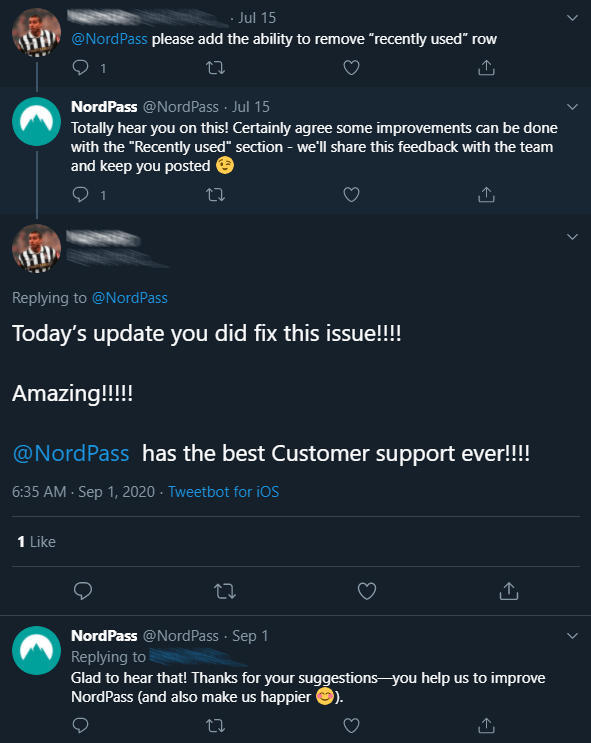
Sure, templates and scripts are useful for streamlining your response and problem-solving. Taking a second or two to personalize them is totally worth it so your service feels more personal, though.
Another key way to personalize your service is to keep detailed records of your customers While new startups may only have a handful of accounts on hand, keeping track of relationships through a CRM is critical once you have dozens or hundreds of customers.
In short, a CRM lets you log your customer interactions such as calls and emails. Here you can also see which products they purchase, how often they engage with your company, and when you last spoke. Here’s how it looks in Zoho CRM, for reference:
A CRM is key to omnichannel customer service as it can serve as your point of reference for how to manage each individual relationship. Integrations with tools like RingCentral allow you to directly reference your CRM data and dial out to them without having to switch platforms. Again, anything you can do to streamline your service tools is a huge point in your favor.
4. Practice proactive customer support
Remember: customer service doesn’t have to mean waiting for a question or complaint to roll in.
Instead, consider how actively reaching out to customers can help you uncover issues before they have time to snowball out of control.
Although this is easier for SaaS startups where you can see how often someone has engaged with your service, any type of business can look at their customer logs (hint: your CRM) to understand the last time you spoke to someone.
From check-in emails and calls to customer surveys (see the example from SurveyMonkey below), touching base through your customers’ channel of choice ensures that your relationships are on the up-and-up:
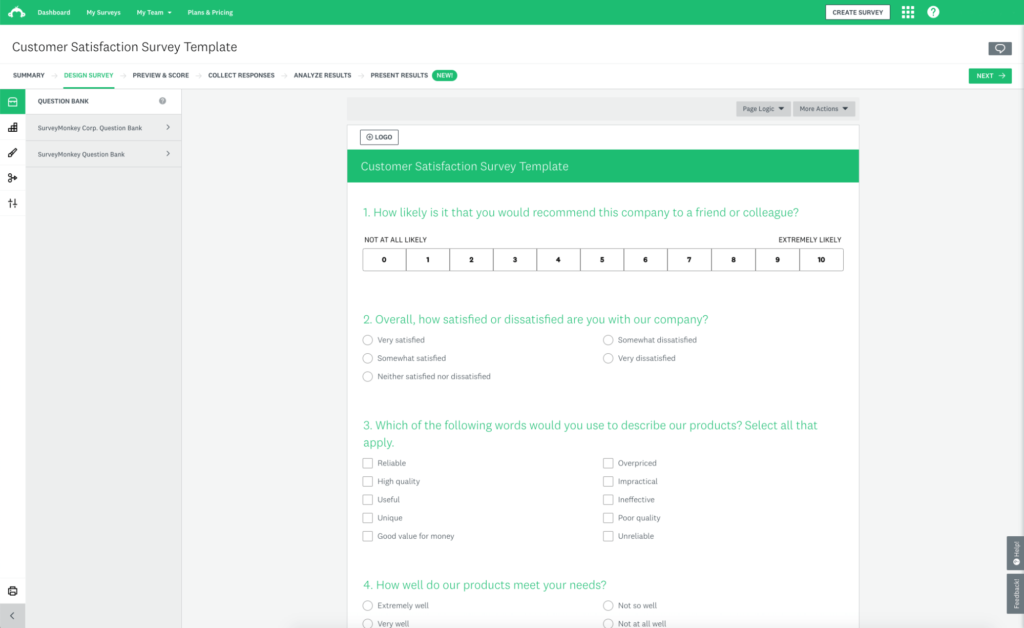
5. Give customers the opportunity to talk to an actual person
Sometimes it’s necessary for customers to talk to a rep in real-time.
Whether it’s a product outage or billing mistake, such concerns require service that just can’t wait.
Many startups rely on live chat as their channel of choice, combining the convenience of digital communication with the immediacy of a phone call. Here’s an example from our own site:

Moving such conversations to the phone or video conferencing is ideal for dealing with frustrating problems. This shows that you’re trying to get to the root of the issue and want to give your customers’ the attention that they deserve.
The ability to talk customers through an issue (or walk them through it via screen-sharing) is a prime example of the sort of service that modern consumers expect.
6. Empower your customers to help themselves
Not every customer service interaction involves holding your customers’ hand.
This is especially true for startups and small business customer service where your schedule is tight.
If your customer service “department” consists of just a couple of employees, putting together a robust self-service desk can be a game-changer. Providing a self-service option cuts down on your volume of service queries while also appealing to customers who don’t want to talk to anyone.
Many startups and enterprise companies have knowledge bases available which consist of tutorials, videos, and how-to guides for customers to search through (see RescueTime’s below):
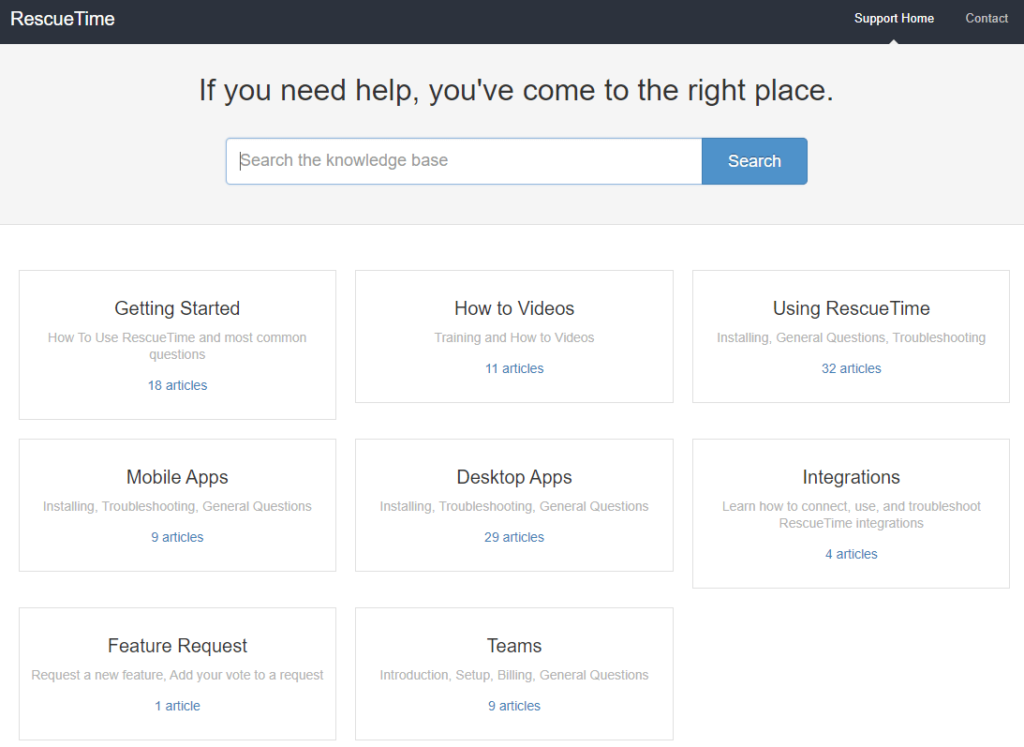
If nothing else, an in-depth Q&A or FAQ section of your site can help guide your customers to the solutions they need:
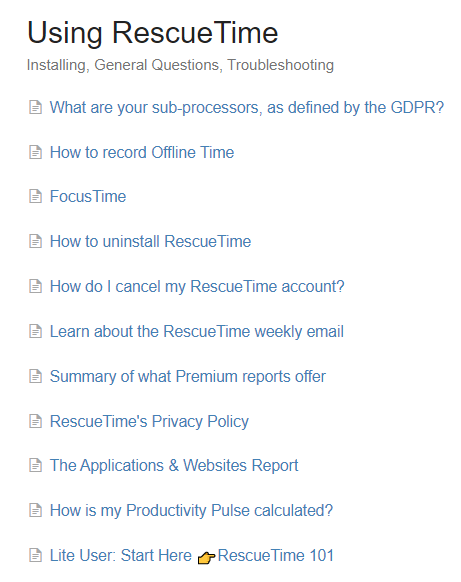
7. Encourage your service team to collaborate
As the old saying goes, two heads are better than one.
The more opportunities your support agents have to tag-team issues and work together, the better. Customer service teamwork prevents anyone from getting overwhelmed and likewise ensures that each individual customer concern is addressed by the right person. For example, some customer concerns might be better suited for a senior employee versus someone who just started.
With team collaboration software, you can quickly pass off questions, concerns, and support tickets to your coworkers. You can likewise keep track of frequently asked questions and document customer concerns to help pick up on company-wide trends (think: customers overwhelmingly asking about a certain product feature or bug):
8. Let analytics guide you to improve your customer service
Startups today are rightfully obsessed with data.
And your customer service data should be no different.
For example, how many calls do you deal during the average week? How long does the typical customer interaction take? Is there room for improvement when it comes to response time?
This is again where a tool like RingCentral comes in handy, offering analytics that can help you clearly identify lag-times in your customer care:
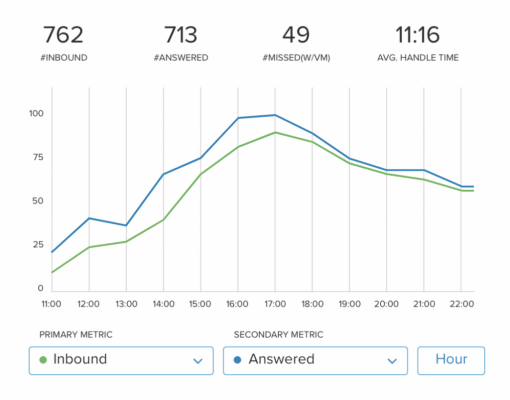
9. Make sure your customer service experience is mobile-friendly
It’s no secret that the bulk of traffic today comes from mobile devices.
You can’t assume that any given customer is sitting on their desktops when they reach out to you. Double-checking what your customer experience looks like for mobile users is crucial.
For example, it’s important that your website supports responsive design and puts your business’ contact options front-and-center. Also, resources such as your FAQ and help desk should be easy to access and read through.
Here’s an awesome example from Adobe, offering a detailed, scroll-friendly customer care center:
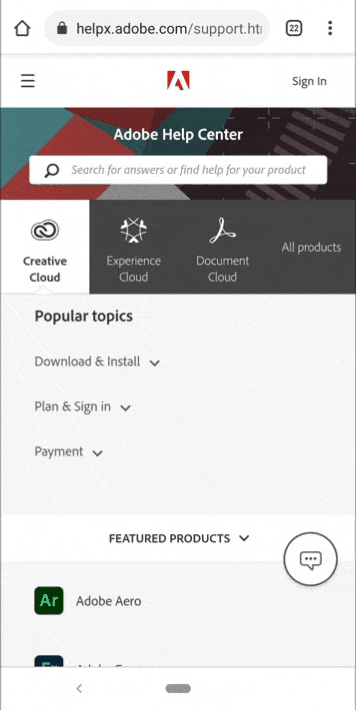
10. Keep an eye on your competitors’ customer service
Although you shouldn’t obsess over your competitors and what they’re doing, having a pulse on their customer service strategy is a good idea.
Because customer experience is actually more important to many customers than the product you’re selling. If you can outperform your competition in regard to the service you provide, you can better position yourself as a more available, empathetic option.
Below are a few questions to ask of your competitors to see how they’re handling customer service (and how you can do better)
- Which customer service channels do they lack? Which ones are they prioritizing?
- How deep is their knowledge base?
- Are they receiving regular shout-outs from customers (see: review sites, social media)?
- What do their customers’ interactions look like? Personalized or templated?
Is your business on-board with omnichannel customer service?
As a startup, you’re challenging with staying lean while finding time to build better relationships with customers.
And doing so is easier said than done.
But again, up-and-coming companies arguably have the most to gain from improving customer service.
With a tool like RingCentral, you can adopt an omnichannel presence quickly, making this a win-win for your business and customers alike as you can cover multiple channels—without totally disrupting the way you do business.
1zendesk.com/blog/customer-service-through-social-media
Originally published Sep 29, 2020, updated Jun 21, 2024


